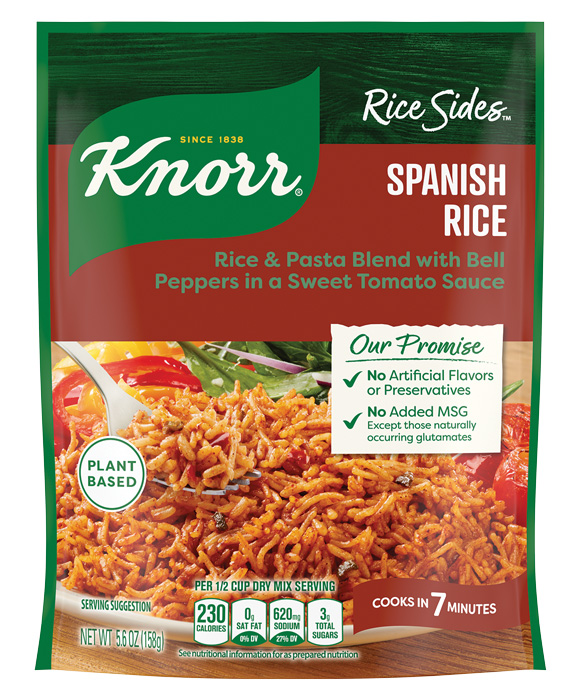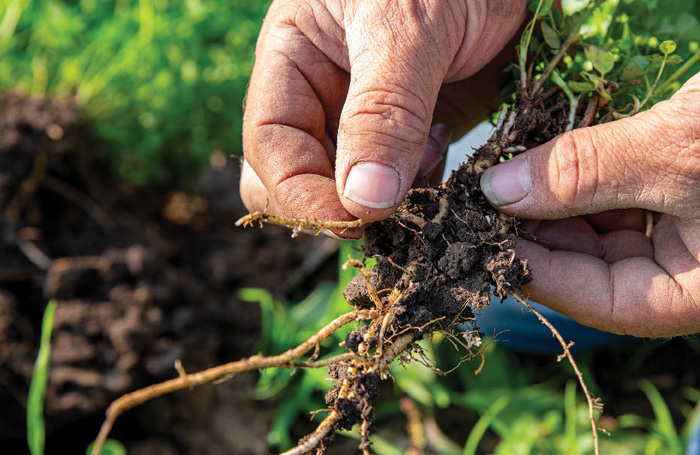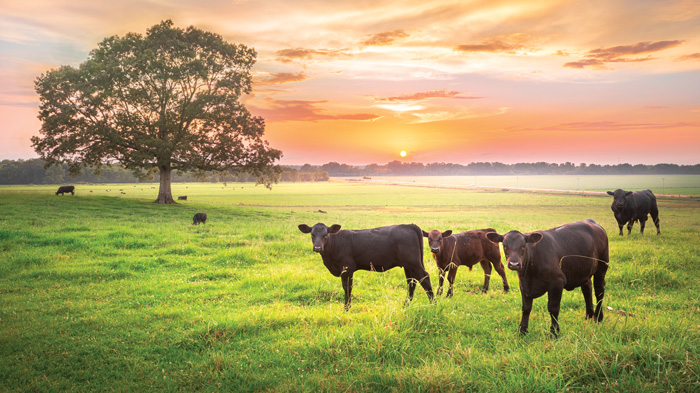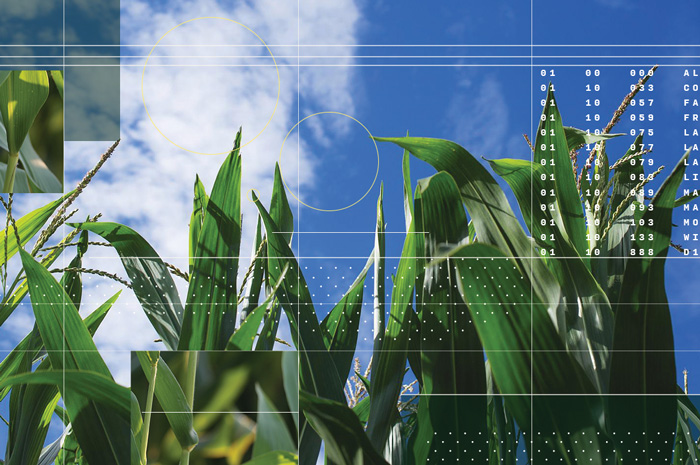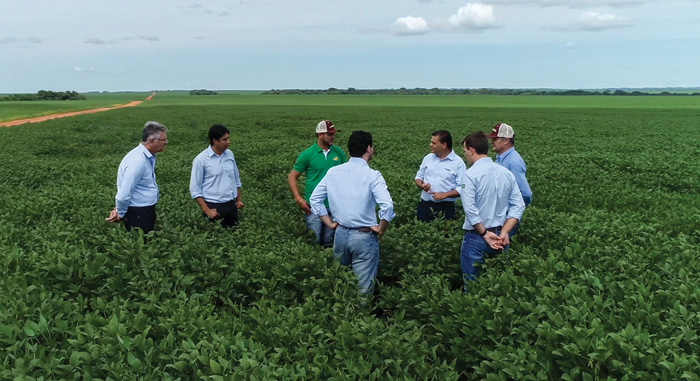
Ground-Level Solutions Toward Net-Zero Food Production
Ensuring the health of the world’s soil—through regenerative agriculture and other practices—takes center stage in the race to halve global greenhouse gas emissions by 2030 and reach net zero by 2050.
Article Content
American food shoppers already can go into a supermarket and see a panoply of descriptors on packages, including terms such as “organic,” “low-fat,” and “non-GMO.” Sometime this year, they’ll be able to pick up a bag of Knorr rice and behold a new attribute: The rice has been harvested from land where farmers use regenerative agricultural practices that help restore fertility, mitigate erosion, and sequester carbon from the atmosphere.
Knorr’s new on-pack messaging will serve as a way for Unilever to let consumers know the company is in hot pursuit of its goal to boost the sustainability of its supply chain. And Unilever isn’t alone; a growing list of other CPGs and commodity companies—from ADM to Danone—are promoting new investments in regenerative agriculture and soil health.
“This will be the beginning of a longer conversation and tracking with consumers, and we’ll continue to talk about our commitment to ensure that a good portion of our ingredients are grown in this manner by the year 2030,” says Gina Kiroff, marketing lead for North America for Unilever’s Knorr brand.
The new soil-health imperative is reminiscent of consumer concerns about antibiotics in livestock that became prominent several years ago and resulted in sweeping changes in practices on the farm. Now it is demands for regenerative agriculture practices that are tugging at the supply chain, starting with dinner tables and supermarket shelves and going all the way back to links behind the farm gate.
“Being able to stand up regenerative agriculture programs is an opportunity for differentiation around ingredients that has value all the way across the supply chain,” says Paul Scheetz, director of climate-smart agriculture origination for commodity supplier ADM.
“We see regenerative agriculture as critical in the transition of the food system to become more resilient and secure as we get more into the impact of the climate and soil erosion and drought,” says Ashley McKeon, director of regenerative agriculture for Cargill, another grain processing titan.
At the same time, companies promoting regenerative agriculture practices are helping meet corporate commitments to reduce Scope 3 greenhouse gas emissions (GHG) under global protocols. (Scope 1 emissions come from sources that a company owns or controls; Scope 2 result from its energy purchases and use; and Scope 3 emissions result from activities of assets that the organization indirectly affects in its supply chain.)
Ten percent of GHG emissions are sequestered in the soil, the Soil Health Institute says. And there is five times more carbon in the soil than in biomass or the atmosphere, says Lars Dyrud, CEO of soil mapping company EarthOptics.
“So solutions to climate change mostly reside in the soil, if you’re looking at scale,” says Dyrud. “There are more than 100 million tons of carbon dioxide in the atmosphere that used to be in the soil. Even if you just put that carbon back in the soil, we could dial back a good 15 years of human emissions.”
For these reasons and others, the road to “net zero” environmental impact for the global food system goes right through U.S. farmland. This story is the first in a series in Food Technology that will look at food production and the environment.
Past Practices and Present Problems
Some experts estimate the American breadbasket could become bare of topsoil in places within several years (see sidebar on page 43). The challenge is even more dire in some developing countries, including most in Africa. More than 65% of Africa’s land is considered degraded—from the drought-stricken fields of northern Ghana to more than 500,000 acres in Sudan that are now affected by poor irrigation and salinization. African governments and farmers adopted Western farming techniques that now are found wanting.
Meanwhile, 278 million people in Africa face chronic hunger, according to the World Economic Forum. Harnessing regenerative agriculture to repair Africa’s degraded lands could be worth $70 billion to farmers, according to a report prepared by Vivid Economics and commissioned by the International Union for Conservation of Nature.
Regenerative agriculture and soil health practices, of course, used to be known simply as “land conservation,” mainly to boost yields, an approach many American farmers have practiced without much fanfare except from state and county agriculture agents. “The United States in particular has a very long history of pushing soil conservation management strategies since the Dust Bowl days” of the 1930s, says John Sheehan, a soil research scientist at Colorado State University. “And there are a significant number of farmers who do practice some form of conservation.”
Nevertheless, conservation agriculture today is pursued on as little as 15% of the world’s farmland, Cargill’s McKeon says. Only about 3.5 million U.S. acres are engaged in some sort of sustainability or carbon sequestering program; boosting that participation is an important goal for proponents of regenerative agriculture.
“Soil health is the foundation for regenerative agriculture,” says Elizabeth Rieke, a scientist with the Soil Health Institute. “It’s not the only thing you can do, but it’s intertwined with lots of important parts. Building the soil helps build resilience to continue to grow the crops we need in an ever-changing world.”
According to the Soil Health Institute, 95% of food is produced directly or indirectly in topsoil. General principles for soil health call for covering as much of the soil as possible, minimizing disturbances, maintaining continuous living plants and roots in the soil, increasing plant and animal diversity to boost drought resilience and decrease plant-pathogen pressures, and integrating livestock, according to Cargill.
Principles of Soil Health
Regenerative agriculture encompasses these and more soil-health principles in various ways:
Reducing tillage. This maintains the sequestration of carbon-rich organic matter in the soil, increases soil biodiversity, and helps slow water flow over the land.
“In some cases, we’re finding that no more than half the field has compaction, but (farmers) are tilling the entire field each year anyway,” says EarthOptics’ Dyrud. “After the first one or two years when you stop tilling the soil, it settles and can become quite compacted. But after several years, you get increased activity from earthworms, and compaction decreases. It’s the gateway drug to regenerative farming. After bioactivity increases, you have increased yields, less fertilization, and have more water retention.”
No-till practices such as “leaving residue and plants into the next year require more difficult management for weeds and different equipment,” Sheehan concedes. “So it’s going to take a bit more of a push, but that’s where the big push is going to be. There’s ample evidence that soil health, carbon, and erosion are dramatically improved when you go no-till.”
Planting cover crops. Using non-crop plants such as switchgrass to cover a field in the off-season manages soil erosion, enriches soil biodiversity, and maintains nutrients.
“At the end of the day, we’re trying to maximize photosynthesis and water retention,” says Chris Kerston, CEO of Land to Market, a consultancy that promotes regenerative agriculture. “You look at nature for a model of how to do that,” he continues. “Any time you see bare ground, we’re not doing those two things well. We need to make sure there is a living plant there for as much of the year as possible.”
Rotating and alternating crops. This improves soil health through enriching biodiversity, which can cut soil depletion, reduce needs for pesticides and fertilizer, check erosion, and even improve the quality and fertility of soil.
In the U.S. Midwest, for example, a diverse rotation might include three cash crops over a five-year period, bringing in small grains, wheat, cotton, and canola. Currently, however, a typical crop rotation looks more like corn to soybeans and back, sometimes integrating wheat or cotton. Another common scenario is three years of alfalfa, a perennial, followed by a year or two of corn, which is an annual. In much of Western Europe, however, crop rotations typically include up to five commodities: corn, sugar beets, potatoes, wheat, and rapeseed, for instance.
In many cases, diversity can be increased by planting a cover crop or mix of cover crops between cycles or by adding pollinator strips or buffers around farm fields. And new alternative crops are emerging, such as yellow peas, increasingly the pillar of plant-based alt-meat products.
Making more precise inputs. This calls for less addition of synthetic fertilizers and synthetic crop protection products and more use of practices that can improve soil health and carbon sequestration, such as spreading compost on fields to boost soil nutrients.
This practice is getting more financially urgent for farmers because up to 80% of nitrogen fertilizer costs are driven by natural-gas inputs, according to the Soil Health Institute. Fertilizer prices already have more than doubled since 2020, and the Ukraine war is exacerbating the situation. Yet, average U.S. corn yields would decline by an estimated 40% if nitrogen fertilizer wasn’t used.
Including livestock. Animal husbandry can be a crucial component of soil revitalization on farms and ranches, through deposits of manure and even from how cows, sheep, and other animals live on the land. Use of more grazing animals on farmland or pasture improves soil health, carbon sequestration, and water retention.
Innovators are spreading the use of “holistic planned grazing,” which helps preserve the carbon-dense land under grasses by temporarily fencing livestock into feeding areas. This mimics natural patterns in which grazing animals were kept concentrated by pack predators and forced to move on after eating, trampling, and manuring an area, then often returning after it was fully recovered.
“The effect of healthy soil and grassland on carbon sequestration is a key reason why grassland and forage-based livestock can have an estimated 40%–50% lower carbon footprint than grain-based livestock,” says Martin Gooch, CEO of Value Chain Management International, a global agriculture consulting firm.
Innovative Measurement Methods
New methods of collecting information about soil health are coming to the fore as there’s increasing interest in what the data says. EarthOptics, for instance, produces a “digital twin” of a farm by installing a network of sensors on field equipment that produce detailed maps of soil attributes such as carbon content and the extent of compaction.
“With every pass you can effectively monitor the soil,” says Cristina Rohr, managing director for investments at S2G Ventures, a firm that invests in agriculture and other verticals, including a stake in EarthOptics. “It can tell you the structure of your soil and how that looks from a tillage perspective. A lot of farmers blanket till without understanding soil compacting. It also can measure carbon content without having to go take an actual sample.”
Trace Genomics takes soil samples but applies advanced genomics and deep data analysis to help farmers understand their soil needs in terms of fertilizers, pesticides, and biologicals. The startup also helps farmers understand soil textures—loam, clay, silt, sand, or combinations—and the microbiomes of farm fields. “The whole component of biology has been missing because the biological world is so complex and the technology hasn’t been there,” says Poornima Parameswaran, Trace cofounder and president.
Harnessing microbes seems to present a significant and largely untapped opportunity to understand and improve soil health. “We haven’t had the ability to look in depth as we do now with all the emerging technologies such as DNA sequencing,” says Soil Health Institute’s Rieke. “We can look at the function of microbes within the soil profile. The big one is nutrient cycling. You add organic materials to the soil and need microbes to process them and turn them around into different plant-available forms.”
Advancing soil health techniques enough to become decisive depends on overcoming some obstacles. First is the challenge in measuring improvements in levels of organic carbon in the soil, the amounts of microbial activity, and “aggregate stability”—the ability of soil clods to resist disruption due to wind and rainfall erosion. “As we move into the world of ecosystem service markets and carbon markets,” Rieke explains, “we need ways to quantify the change across these different systems, soils, and climates. We want to be able to apply apples to apples.”
That’s because it’s all about the carbon markets. For agriculture to play a meaningful role in carbon sequestration, the supply chain must have clear regulatory parameters and a resilient infrastructure for regenerative farms, S2G Ventures says. There’s also a need for market differentiation for regeneratively produced products, appropriately calibrated financial models, flexible financing instruments, and information diffusion to promote the formation of catalyzing partnerships.
“The gold standard for monetizing low-carbon initiatives is trust-based reporting and verification, tied to continual improvement programs,” says Gooch. “This relies on businesses sharing strong strategically and operationally aligned relationships.”
CIBO Technologies is one company trying to fulfill that need. “We’re the connective platform between a food or ag company and growers,” says CEO Daniel Ryan. Growers enroll with CIBO just as food companies come to them with the need to recruit farmers to programs that help the companies meet Scope 3 commitments.
But Gooch is among those concerned that companies scrambling for Scope 3 credits and consumer recognition are producing a “dash for cash and the possibility of artificially inflating the value of land, and what that will do to the food industry’s overall attention to sustainability. The main people who will benefit from this are in the finance industry.”
Incentivizing Farmers
Nonetheless, not-for-profit entities such as American Farmland Trust, and Ducks Unlimited, with its cohort of duck hunters interested in rural biodiversity, have been trying to incentivize farmers to practice regenerative agriculture. The U.S. federal government also is getting more involved. For example, the U.S. Department of Agriculture is disbursing about $3 billion over two years to 70 project recipients that are pursuing regenerative practices and other “climate smart” techniques. They range from sugar beet to almond growers, and
cotton to dairy farmers.
But such efforts remain relatively tiny compared with the possibilities from a new behemoth that has shown up at the farm silo: big food and agriculture commodity companies. ADM, Cargill, General Mills, Nestlé, and PepsiCo are among major companies that are enlisting farmers in soil health practices to help meet their Scope 3 GHG-reduction commitments.
Danone in the United States already sources 75% of its milk from land where farmers use regenerative practices, totaling nearly 150,000 acres—surpassing the company’s initial goal of 100,000 acres by 2022, including some almond-growing land. Danone’s partner farmers placed cover crops on 69% of that acreage. The company’s Oikos yogurt brand, for instance, promotes regenerative agriculture and Danone’s partner farmers on its packaging.
So far, the financial windfalls for farmers are less than overwhelming. Many CPG companies’ regenerative agriculture subsidies pay from $5 to $50 an acre depending on crops, regions, and methodology. For soybeans, U.S. farmers’ average yield is about 50 bushels of soybeans per acre, and the market price at the time of publication was around $15 a bushel. That means a financial return for the farmer of about $750 an acre; so a regenerative agriculture premium of, say, $20 an acre would add about 3% to a farmer’s take for that crop.
Meanwhile, Ryan says, thorough regenerative agriculture practices may cost a farmer an extra $30 to $50 a year per acre. And their yields likely will go down for a while. “The challenge is to get enough farmers to transition at scale,” he says. “In the long term, in theory, if they do this for a few years, they should improve their income statement, reduce input costs, and so on. But what does it take for a grower financially to adopt these practices?”
Also, about 55% of American farmland is leased, and growers who rent “may not know if they’ll have the land to rent for 10 years,” Ryan says, “so how do you incent them? But the nice thing about landowners is that land tends to be a long-term investment, and so if they do [regenerative agriculture] stuff over 10 to 15 years, the relative productivity of the land should increase, and its value [should] increase faster than the land around it.”
There also are cultural barriers on the American farm. “Sometimes you can talk about climate change and can turn off some people in rural communities who don’t want to hear about it,” says Colorado State University’s Sheehan. “But you talk with them about drought and changes that are occurring in their weather patterns, and they recognize these things are here and they need to do something about it.”
Just How Dire Is the Topsoil Situation?
So do we have a half-dozen passes left in the rich dirt on American farms—or a thousand?
Soil-health advocates have a handy weapon in their arsenal aimed at public persuasion: the notion that traditional agriculture has so abused cropland, the world faces a potentially imminent disappearance of the very stuff that sustains the most important food supply on the globe.
Assessments are all over the map but mostly dire: The United Nations has predicted there are only about 60 years of topsoil left in much of the world, while a 2021 study published in the Proceedings of the National Academy of Sciences asserted the topsoil is already gone from much of America’s fabled Midwestern cropland.
But some experts counsel a less alarmist approach. “It’s hard to put a timeline on it,” says Elizabeth Rieke of the Soil Health Institute. “Tilled fields are quite low as far as organic matter goes. But as much as they’re beaten up, they’re not dead yet. In the northern Midwest, there are some really fertile soils, and some people can get away with tilling year after year.”
One reason for skepticism about the scare claims, says Colorado State University soil scientist John Sheehan, is that “all biomass is local. The 60-year number is sort of really not a useful number for people to be throwing around. Yes, there is some soil out there that probably has a lifespan of less than 100 years, maybe 16% of global soil. But more than half of global soil has an estimated lifespan of greater than 1,000 years, and a percentage is on order of 10,000 years. It’s very site-specific.”
And today’s assessments “are typically linear-extrapolation statements, like saying, ‘When the population doubles, there will be mass famine,’” notes Lars Dyrud, CEO of soil-mapping startup EarthOptics. “People react pretty quickly when things get bad.” He adds, “Dust bowls and deserts happen naturally in the world all the time. We know it’s real and can happen. I’m just not sure it’s going to happen in 20 years.”
TO LEARN MORE
Partnering on Regenerative Ag
Danone’s partnership with California’s Woolf Farming supports the farm’s regenerative practices. To learn more about the venture, visit iftexclusives.org/woolf.
Organic Versus Regenerative
Organic agriculture isn’t the same as regenerative agriculture, but there are parallels—and lessons to be learned. For more on the topic, visit iftexclusives.org/organic-vs-regen.
Stay Tuned: The Road to Net Zero
This is the first in a series of four articles that will delve into the complexities of getting food production greenhouse gas emissions to net zero by 2050.
- July 2023: Next-Gen Crops and Ingredients
- September 2023: The Future of Cellular Ag
- December 2023/January 2024: Leveraging AI
Key Takeaways
- Sequestering carbon in soil is critical to reducing the environmental impact of food production.
- Supporting regenerative agriculture practices helps companies meet global protocols for greenhouse gas reduction.
- Practices key to preserving soil health include reducing tillage, planting cover crops, rotating crops, and making more precise inputs.
- Sophisticated tools for managing soil health are emerging.


